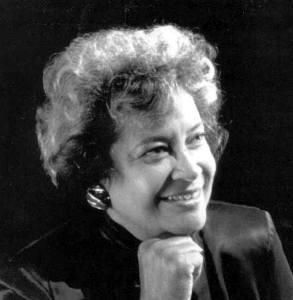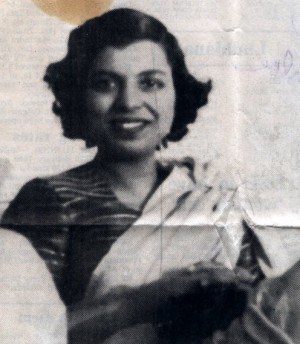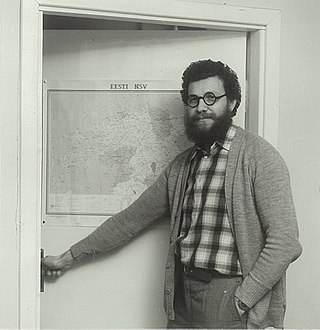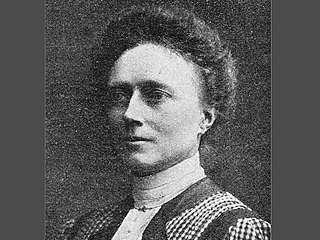
Lilia Skala was an Austrian-American architect and actress known for her role in the film Lilies of the Field (1963), for which she received critical acclaim and an Academy Award nomination. During her career, Skala was also nominated for two Golden Globe Awards and a Primetime Emmy Award.

Norma Merrick Sklarek was an American architect. Sklarek was the first African American woman to become a licensed architect in the states of New York (1954) and California (1962), as well as the first Black woman to become a member of the American Institute of Architecture (AIA). Her notable works include the United States Embassy in Tokyo, Japan (1976) and the Terminal One station at the Los Angeles International Airport (1984).Sklarek is credited with helping to pave the way for other female and minority architects. AIA board member Anthony Costello called her the “Rosa Parks of architecture” in the AIA newsletter.
Hanno Grossschmidt is an Estonian architect.
Tomomi Hayashi is a Japanese-Estonian architect.
Katrin Koov is an Estonian architect.

Erika Nõva née Volberg was an Estonian architect, remembered mainly for her farmhouse designs. She was the first woman to graduate as an architect in Estonia.

Johanna Erna Else Schröder was a Dutch architect and educator. After becoming one of the first women to practice architecture in the Netherlands, she opened her own architecture and interior design firm in Amsterdam. In the 1963, she immigrated to the United States where she went on to teach interior design at Adelphi University, Parsons School of Design, New York Institute of Technology and Virginia Commonwealth University.

Women in architecture have been documented for many centuries, as professional practitioners, educators and clients. Since architecture became organized as a profession in 1857, the number of women in architecture has been low. At the end of the 19th century, starting in Finland, certain schools of architecture in Europe began to admit women to their programmes of study. In 1980 M. Rosaria Piomelli, born in Italy, became the first woman to hold a deanship of any school of architecture in the United States, as Dean of the City College of New York School of Architecture. In recent years, women have begun to achieve wider recognition within the profession, however, the percentage receiving awards for their work remains low. As of 2023, 11.5% of Pritzker Prize Laureates have been female.

Zelma Wilson, née Gussin, was an American architect, practicing mainly in California.

Sigrid Lorenzen Rupp was a German-American architect. She ran a private practice, SLR Architects, in Palo Alto, California, from 1976 to 1998, and specialized in designing facilities for tech companies in Silicon Valley.
Henrieta Delavrancea (1897–1987) was a Romanian architect and one of the first female architects admitted to the Superior School of Architecture in Bucharest, but because of the suspension of her classes during World War I, she was not the first female to graduate. She was one of the best known women architects in Romania and a significant contributor to the modernist school of Romanian architecture, until state-controlled design in the communist era curtailed individuality.

Eleanore Kendall Pettersen was an American architect. She was one of the first licensed female architects in New Jersey, where she operated a private practice from 1952 to 2002.

Urmila Eulie Chowdhury was an Indian architect who worked during the mid-to-late 20th century. She worked in the fields of general architecture, landscape architecture and design, and was also a teacher and writer. She was a pioneer woman architect working in India. Some sources state that she was also the first female architect in Asia. After her education she worked in close collaboration with Le Corbusier in the planning design and construction of the city of Chandigarh.

Ruth María Rivera Marín was a Mexican architect. Her professional experience centered on teaching, institutional management, theory and practice related to architecture. She was the first woman student of the College of Engineering and Architecture at the National Polytechnic Institute.

Tiit Kaljundi was an Estonian architect and a member of the Tallinn School. He became well known in the later part of the 1970s as a part of a new movement of Estonian architects that was led by Leonhard Lapin and Vilen Künnapu. The majority of the architects in this movement were graduates from the State Art Institute in the early 1970s. This group included Kaljundi, Avo-Himm Looveer, Ain Padrik, Jüri Okas, and Ignar Fjuk, as well as Veljo Kaasik and Toomas Rein from an older generation of architects. After the 1983 exhibition in the Tallinn Art Salon, they became known as the “Tallinn Ten" or the "Tallinn School," a broader term to describe the group used by the Finnish architect Markku Komonen.
Melita Rodeck was an American architect. She studied architecture at the Polytechnic Institute of Vienna, Austria in 1932 and immigrated to the United States in 1939 following the spread of World War II. Rodeck became a registered architect of the District of Columbia in 1952. She was the founder of her own architectural design firm, Melita Rodeck & Associates, and the Regina Institute of Arts. She was a lecturer for the Department of City Planning, Catholic University of America. Throughout her career, Rodeck served the US Army Corps of Engineers, the US Dept. of Housing and Urban Development, and Federal Emergency Management Agency. She was the President of the DC Branch of American Association of University Women, and a member of Emeritus of AIA for the Federal Emergency Management Agency.

Gulchohra Huseyn gizi Mammadova is an Azerbaijani architect, academician, Doctor of Architecture, and the current president (rector) of Azerbaijan University of Architecture and Construction. She was also a deputy in the Azerbaijani National Assembly from 2000 to 2005.
Kaire Nõmm is an Estonian architect.
Musa Borysivna Konsulova was Ukrainian architect and researcher of architecture.

Signe Lagerborg-Stenius was a Finnish architect, member the Helsinki City Council. She was the second woman in Finland to complete a four-year course at the Polytechnic.













